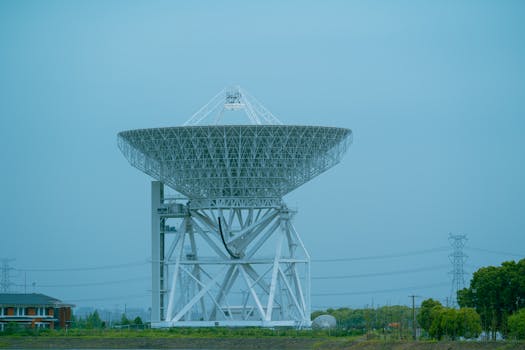Satellite Telecommunications 2023: What’s New and What’s Next? Satellite Telecommunications

Satellite Telecommunications 2023: What’s New and What’s Next? Satellite Telecommunications
Satellite Telecommunications is a rapidly evolving field, with new technologies and innovations emerging in 2023. The industry has experienced significant growth in recent years, driven by advances in satellite technology, increasing demand for global connectivity, and the need for reliable and secure communication services. In this article, we will explore the current state of the satellite telecommunications industry and what’s next for this exciting field.
Current State of the Industry
The satellite telecommunications industry has undergone significant transformations in recent years. One of the key drivers of this growth has been the increasing demand for global connectivity. With the rise of remote work, online learning, and digital commerce, the need for reliable and secure communication services has never been greater. Satellite telecommunications has emerged as a critical component of this ecosystem, providing connectivity to underserved and remote areas, as well as serving as a backup to traditional fiber-optic networks.
Another significant trend in the industry has been the emergence of new satellite technologies. The development of low-Earth orbit (LEO) satellites, for example, has enabled the creation of constellations of small satellites that can provide high-speed, low-latency connectivity to users around the world. These satellites have the potential to revolutionize the way we communicate, enabling faster and more reliable connectivity to even the most remote areas.
What’s Next for Satellite Telecommunications
So, what’s next for satellite telecommunications? One of the most exciting developments on the horizon is the launch of new satellite constellations. Companies such as SpaceX, Amazon, and OneWeb are planning to launch thousands of new satellites in the coming years, which will enable the creation of global networks with unprecedented coverage and capacity. These constellations will have the potential to provide high-speed, low-latency connectivity to users around the world, enabling a wide range of new applications and services.
Another significant trend that is expected to shape the future of satellite telecommunications is the increasing use of artificial intelligence (AI) and machine learning (ML) technologies. These technologies have the potential to optimize satellite network performance, predict and prevent outages, and enable more efficient use of satellite resources. As the industry continues to evolve, we can expect to see more innovative applications of AI and ML in satellite telecommunications.
Challenges and Opportunities
While the future of satellite telecommunications is exciting, there are also significant challenges that need to be addressed. One of the key challenges facing the industry is the issue of space debris. As more satellites are launched into orbit, the risk of collisions and other accidents increases, which can have significant consequences for the entire industry. To address this challenge, companies and governments will need to work together to develop and implement more sustainable and responsible practices for satellite operations.
Despite these challenges, the satellite telecommunications industry is poised for significant growth and innovation in the coming years. As new technologies and applications emerge, we can expect to see more exciting developments in areas such as 5G, IoT, and quantum computing. Whether you’re an industry professional, a researcher, or simply someone interested in the latest developments in satellite telecommunications, there’s never been a more exciting time to be involved in this field.



